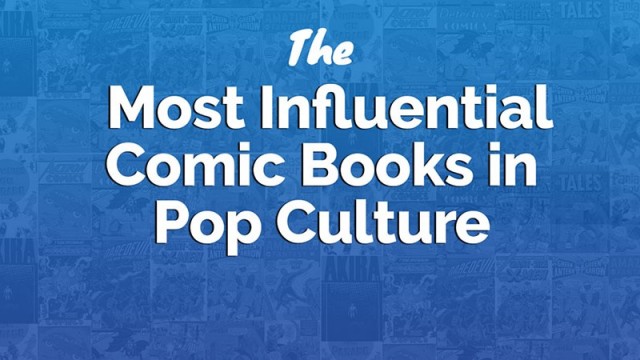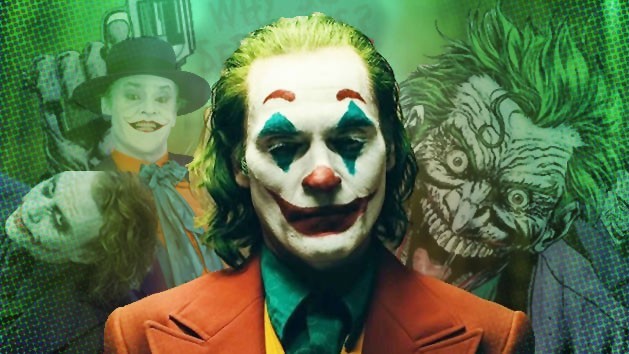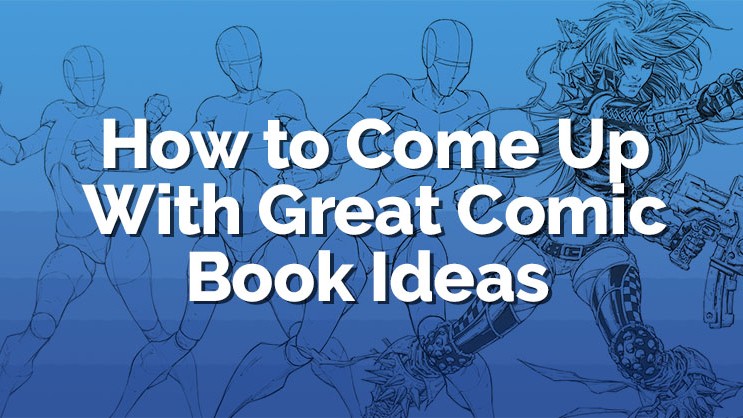
Let’s explore how to come up with great comic book ideas — with insights and tips from the experts
Have you ever dreamed of writing an incredible comic book but don’t know where to start? You’re not alone. As comic book lovers, we would love to know the secret to coming up with legendary comic book ideas and how to flesh them out to make them unforgettable. If it were easy, we’d all do it — it’s a fine art, requiring attention to detail and artistic flair.
The good news is, if you’re eager to create the next great comic book, it’s not an impossible feat. In fact, ideas for comic book stories are everywhere and all around us — you just need to bring them to life. An idea for a comic book can come from anything. It can be simple or it can be complex. What matters most is to pick the right idea — one that is right for the creator and the audience. What matters is that the story is interesting and presented in a captivating way.
Do you have a valuable comic book? Check out our free comic price guide
How Do You Start a Comic?
Comic book plot ideas are a way to communicate an idea. It does not have to be complicated — some of the greatest comic book plot ideas of all time are very simple. Sometimes the joy of watching something done well is worthwhile in and of itself. This is why classic stories like the chase scene or the fight scene are so enjoyable. More complicated stories can be made of layers or combinations of simple elements, or they can be made of new and daring ideas that have never been tried before.
The Art of Writing Comic Books
One of the most important decisions facing any writer of comic books is that of the genre. The choice of the plot will generally place the work within a particular genre, and once inside that genre, further creative decisions will be viewed within the rules of that genre.
If the comic book story ideas are about car chases or gun battles, then the comic will probably be an action or adventure comic. On the other hand, if the plot is about two people who meet and fall in love, then the comic will be seen as a romance comic. A non-fiction comic that attempts to recount the reality of an event will have a very different structure than an entirely fictional comic. The comic book creator will simply have to explore, and come to terms with the fact that they could spend a lifetime exploring. There is no perfect formula beyond this — if you must do what someone else has done, at least do it in a different way.
How to Develop Comic Book Characters
Characters in a comic book have requirements that are not found in other media. For one, they must always be visually distinctive. This means that some thought must be put into their design and into the design of the world around them.
Some creators come up with certain colors, or combinations of colors, and then assign them to particular characters, making it easy for the viewer to pick out the main character from the cacophony of a printed page. This trick goes all the way back to the Yellow Kid, Superman, and other comic books nearly a century old.
Much attention is also paid to the silhouette of the character and to the basic shapes that make up their form. These artistic attributes can help to give characters a life of their own. Beyond that, the rules of characterization are exactly the same as the rules for conversation. It can be about anything, so long as it is interesting and appropriate.
Looking for inspiration for a great villain? Learn all about the evolution of the Joker
 Andy Schmidt, Founder & Instructor Comics Experience
Andy Schmidt, Founder & Instructor Comics Experience
"Developing characters from a macro standpoint is fairly simple. You just need to understand the basic and essential elements. Everything beyond that starts to fall into place fairly easily. Those elements are rather simple, too. The first thing your character needs is a GOAL. They must be trying to achieve something. It can be big or small, but it has to be something I can understand clearly. Often, simpler is better. Indiana Jones wants to acquire the ark of the covenant. That's his goal. It's motivated by his love of history and archaeology—not by the government asking him to go get it. But that motivation exists to justify the goal. His traits, what make him really interesting, is his methodology which is unconventional even by the standards of the 1930s.
So when I create a character I start with his or her goal. And then everything else is built around that—in support of it, in contradiction to it. Often we have cross-purposes in our own lives. This is where the complexity of character comes in.
Is this how I make characters for comics? Yes. But it's really just how we make great characters in any medium."
How to Develop a Comic Book Plot
The plot of a comic book unfolds naturally as events occur and are interpreted through the lens of the characters. There is a lot of focus on the characters because they are one of the primary tools that the creator and the audience will use to determine what stories are worth their emotional investment. However, for all the attention, the proper creation of characters remains an arcane art form that can take decades to master. The process of creation will naturally lead to certain characters taking center stage, and the exact characters who do so will often be a complete surprise to both the creator and the audience. But there is no way to force this process — it must be allowed to grow in its own time.
Tips from Experts on How to Write a Comic Book Plot:
 Ramon Gil, Comic Book Writer & Entrepreneur, ramongil.com says:
Ramon Gil, Comic Book Writer & Entrepreneur, ramongil.com says:
"I start with an idea or even a title that intrigues me. Like "The Hard Code" which my daughter said in passing about something else. From there my mind started filling up with images of androids and cops. What if this or what if that? Once I have the basic premise, I came up with the story outline, and lastly, character development, if I felt that the characters were going to be most interesting to put in that situation. Most of my ideas and inspiration come from historical and science documentaries and NPR."
 Palle Schmidt, Comic Book Artist & Writer, comicsforbeginners.com says:
Palle Schmidt, Comic Book Artist & Writer, comicsforbeginners.com says:
"My first tip for making comics would be to work off a script. As obvious as it may sound, a lot of aspiring creators are really into the drawing aspect and eager to get to the inks and make it look amazing. But skipping the first few steps will likely make you stumble and fall. I would recommend at the very least you have an outline of some sorts, covering the basic beats of the story - beginning, middle, end.
I would also suggest making thumbnails or scribbles of each page before going to work on a big, expensive drawing board. I myself have screwed up copious amounts of stock paper because I hadn't thought through the composition first."
My last basic tip would be to start small. Rather than breaking your neck on a big, audacious graphic novel right off the bat, make a short 3-10 page story and FINISH it. Best way to learn.
What You Need to Know About Comic Book Illustrations
The illustration of a comic book or a graphic novel is a subject of enormous breadth and depth, but an overview of the process can be presented in a few short paragraphs. The traditional comic book will move through the stages of penciling, inking, coloring, and then the lettering. In modern terms, this can be seen as a process of gradual embellishment.
Although the penciling stage still often happens in pencil — as people generally find pencil and paper to be an excellent tool for sketching, breaking down pages, and roughing out ideas — from there, the art of the modern comic book will almost always move to the computer. The process traditionally known as "inking" has been replaced with a stage that represents the standardization and embellishment of the existing art, usually with an emphasis on completion in black and white.
From there the work moves to the colorist, who will add the eye-catching tones and special effects. Finally, the letterer makes sure the dialogue and captions are all in place. There are a tremendous variety and innovation within this basic approach, and today more than ever the lines can blur between roles in illustration — but this is the basic framework.
Tips from Experts on How to Illustrate Comic Books:
 Clayton Barton, Comic Book Artist, howtodrawcomics.net says:
Clayton Barton, Comic Book Artist, howtodrawcomics.net says:
"When it comes to illustrating characters, the most important thing to learn is the underlying foundations that hold up their final presentation. They're the basic figure drawing principles – gesture, anatomy, and proportions. These principles are simple enough to learn on their own and that's the way you'll want to approach them, by mastering each of them individually. Combined, they'll give you the ability to create structurally sound characters predictably and consistently. I like to think of a character's foundations as being a mannequin or armature that their design, rendering, and any other additional details will be layered on top of. So everything you add to your character going forth, beyond that basic structure depends on its solidarity. These figure drawing principles may be rudimentary and uninteresting to look at in the preliminary stages of your drawing, but they will be the greatest determiner of your character's success."
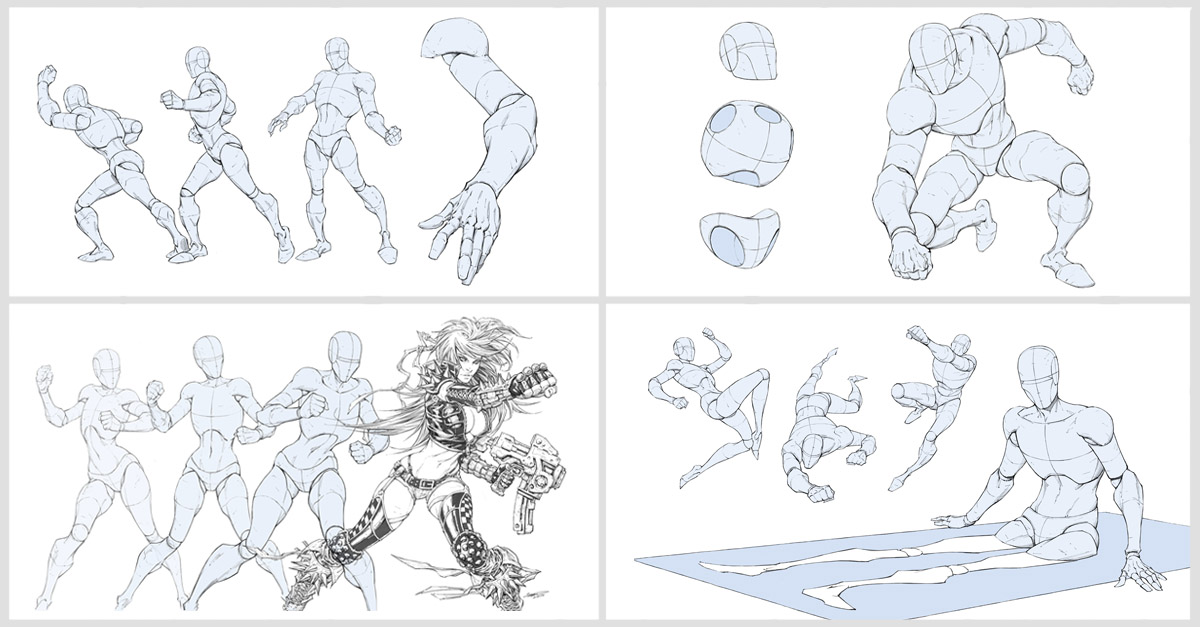
 Ira Marcks, Illustration, Concept Artist & Instructor: Illustration Classes says:
Ira Marcks, Illustration, Concept Artist & Instructor: Illustration Classes says:
On Picking Colors for a Character Design:
I begin by filling in one of the character’s defining attributes (like the skin, hair, clothing, or artifact/weapon) with a single color. I think it’d be cool if this elf dude had red/orange skin:
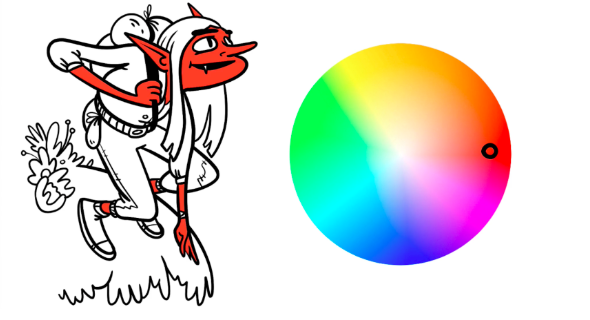
I like to use what’s known as the ‘triadic color’ theory to help me develop the rest of my color scheme. According to the theory, I should try adding a complementary green as well as a slightly more analogous purple/blue.
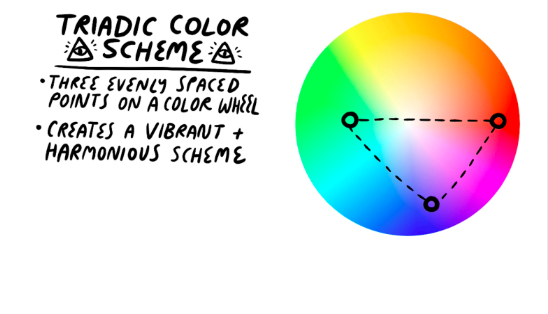
I use the triadic color scheme to establish the base colors of my characters other important aspects. I’m using the green for his shirt and the purple/blue for the hair:
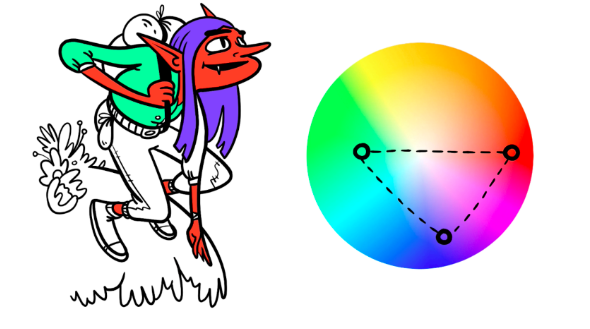
From there I continue developing my palette, including shadows and highlights. But I never stray too far from the triadic theory. This helps maintain the bold contrast found in my original three colors. Here’s the finished result:
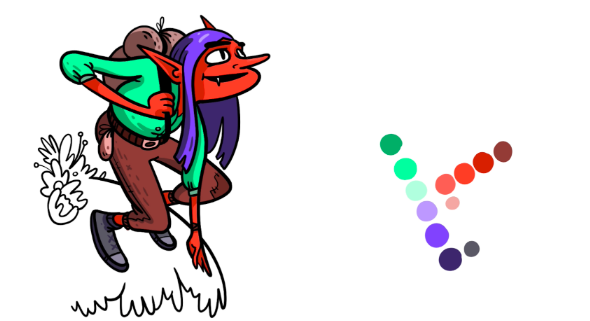
This technique is a great way to develop eye-catching color schemes that help distinguish your characters. Give it a shot!
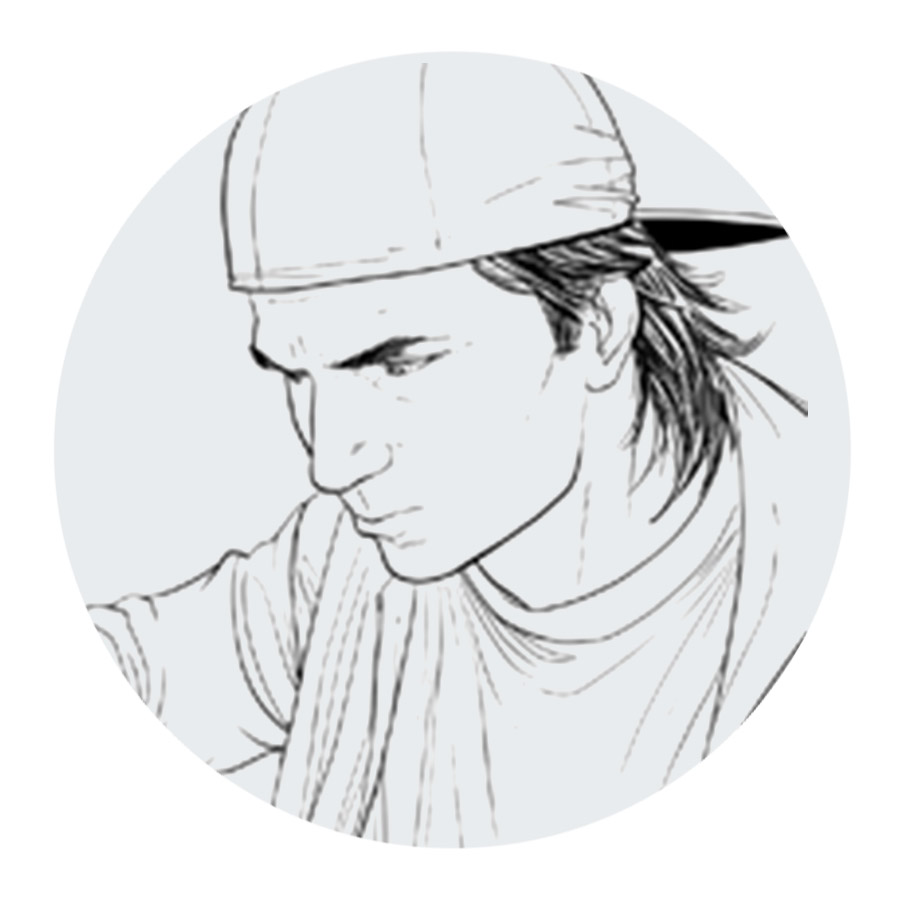 Phillip Sevy, Comic Book Art Instructor, Comics Experience says:
Phillip Sevy, Comic Book Art Instructor, Comics Experience says:
"With so many different ways to make comics (traditional, digital, etc), what excites me about illustrating comics (and what I try and focus on) are the basic tools you need to use in order to make your story. When I approach a page (I'm currently writing, penciling, inking, and coloring on a series called "Triage" that Dark Horse is publishing where I'm writing, penciling, inking, and coloring each page), I'm always focused on what helps tell the story. Visual storytelling, at a broad level, is about using all the tools at your disposal to create a story that is clear to read, engaging, and dramatic. As an artist, it's my job to take what the script is and elevate the written word. I will identify the important components of each panel, and try to identify which panels need to most area/focus. I try to understand the emotion of the page/panel and chose panel shapes, size, camera angles, camera heights, and area shown to find the best solution possible. I start by roughing that out in thumbnail stage (roughly 1 x 2 inch) before redrawing that larger in a layout (3.5 x 5).
At this stage, I flesh out my composition, perspective, character placement, and basic character acting. Then, I'll blow it up to full size (11 x 17), find/create a reference (from my head, photographs, 3d models - all depending on what I need for the scene) and start penciling.
At this stage, I'm looking for clarity and signposting - I'm signaling enough information on the page for the people down the production pipeline that they know what's important. For inking, I'm focused on texture, composition, lighting, and flow. And coloring is elevating those principles while setting up the mood, feeling, and drama."
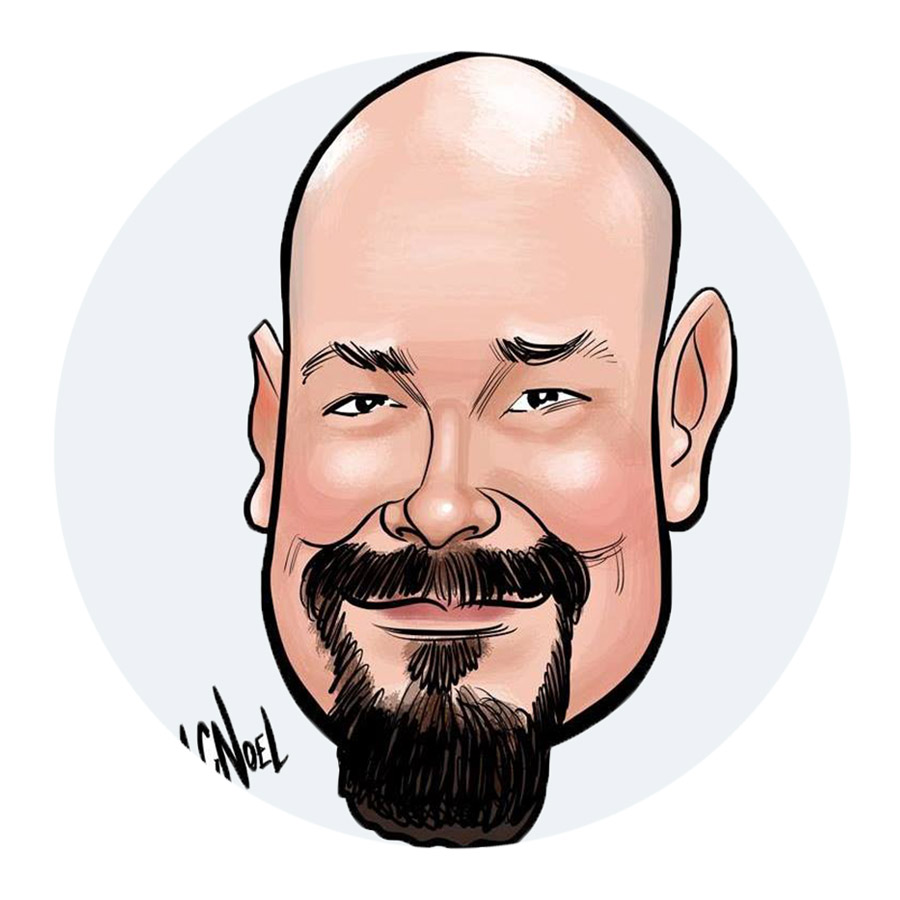 Howie Noel, Comic Book Artist, HC Noel Comics says:
Howie Noel, Comic Book Artist, HC Noel Comics says:
"For my comic series "Tara Normal", my personal goal is to make each character unique and different from other members of the cast. In addition to being a writer and comic artist, I'm also a professional caricaturist so I want the faces I draw to be expressive. When creating an original character, I do several rough sketches before creating a final version. In my imagination, the character's alive, and their personality influences details like their wardrobe and hair. You also want to make sure you're creating something that's fun for you to draw because you'll have to draw these characters over and over again throughout the story. I highly recommend doing a lot of research when it comes to illustrating clothing and accessories. It helps add reality to your story."
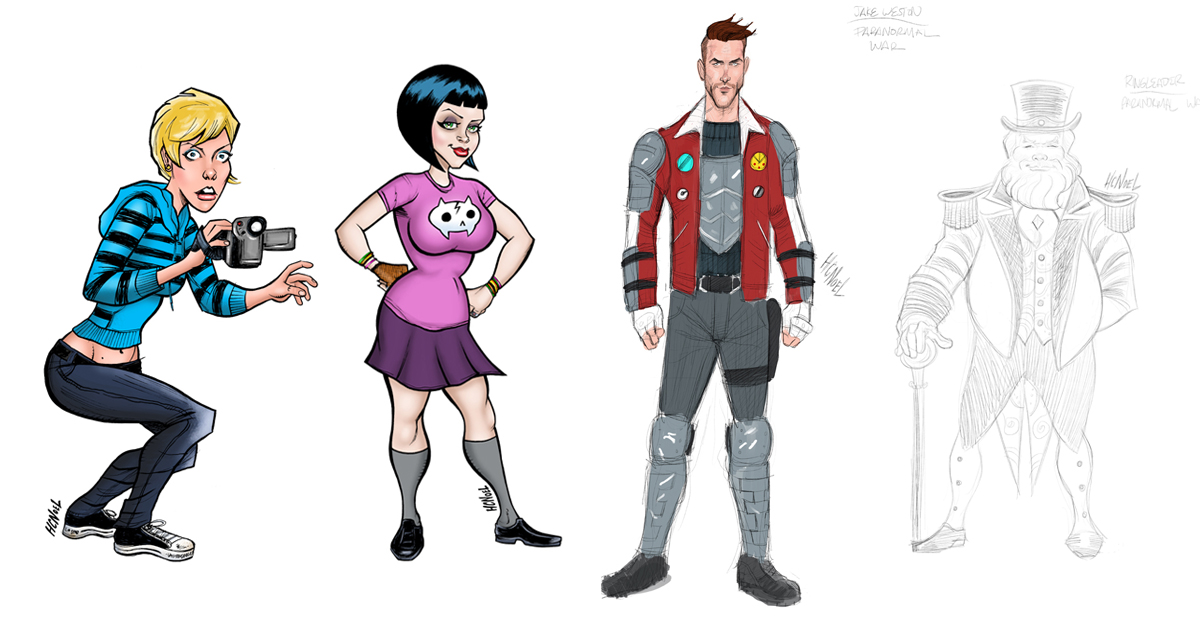
 Jeff Weigel, Comic Book Artist, jeffweigel.com says:
Jeff Weigel, Comic Book Artist, jeffweigel.com says:
"My advice to aspiring comics artist is this: save time by planning your story out with thumbnail sketches rather than launching right into full-sized pages right away. My thumbnails are quickly scribbled plans for each page's design. They are a way to resolve all the storytelling issues of a comic book story—how much of the story to tell on each page, how many panels to use and how they fit together on the page, resolving decisions on whether to use an establishing shot, a close-up, a medium shot, and what to include in each panel and how to compose it. Making these decisions in small thumbnail sketches allows me to resolve all the storytelling and pacing issues upfront before I put energy into drawing and rendering, where bad decisions can be time-consuming to fix. When I work on a graphic novel I will thumbnail every page of the book, from first to last, before I ever start a penciled page."
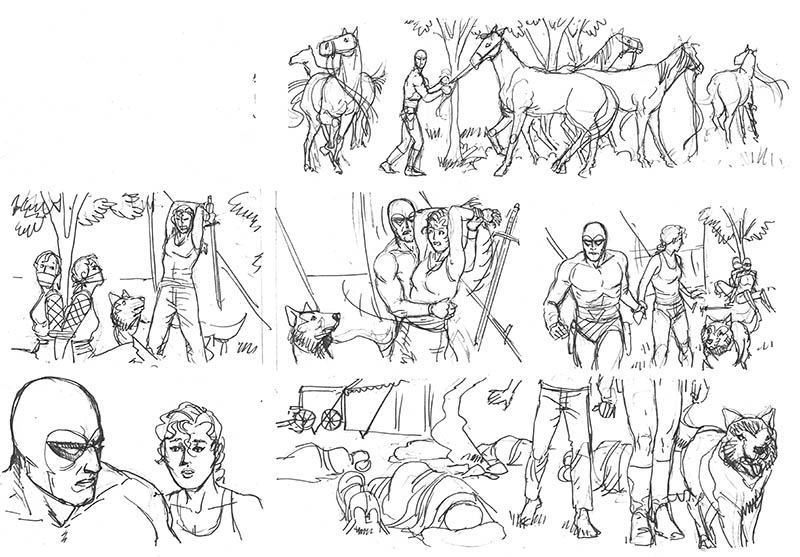
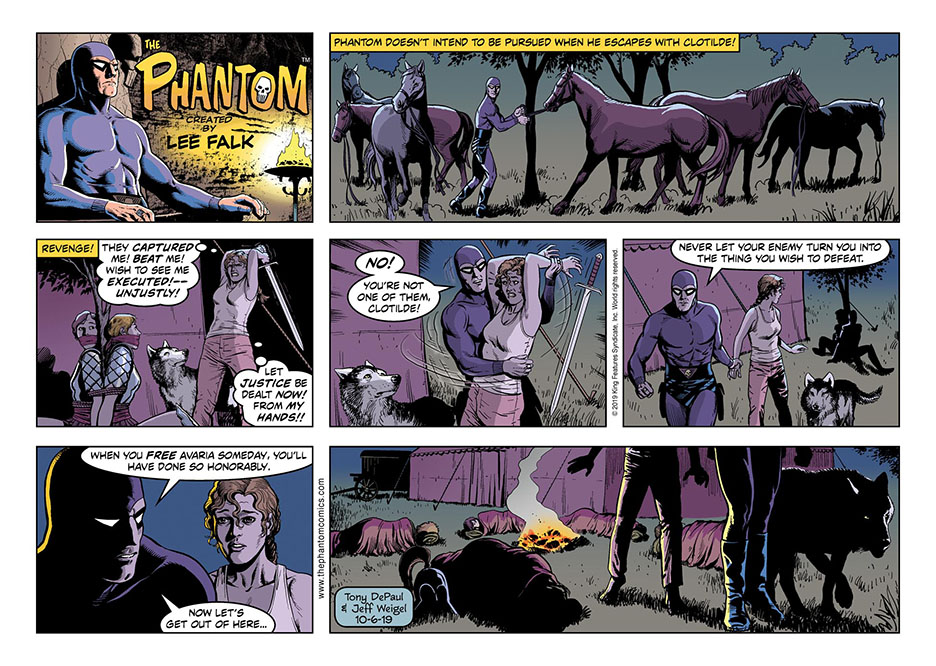
Creating Comic Book Ideas: Try It for Yourself
Comic books are one of the great modern forms of art. Creating one is an arduous and painstaking process, but the results are more than worthwhile. Great ideas are the beginning of great stories, though there is much work to be done once the idea has been found. The long journey begins with a single step, so get started on your comic book today.
Are you looking to sell your comics online? At Quality Comix, we know a great comic book when we see one. We'll make sure you get the best deal for your books. Contact us to get your offer today.

